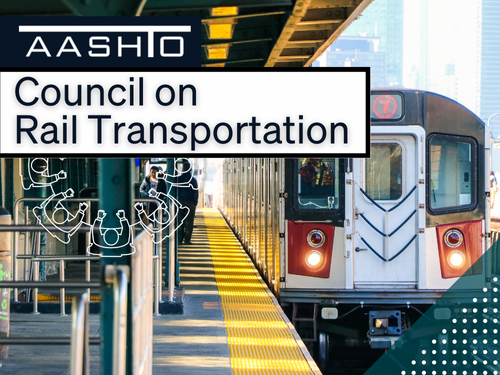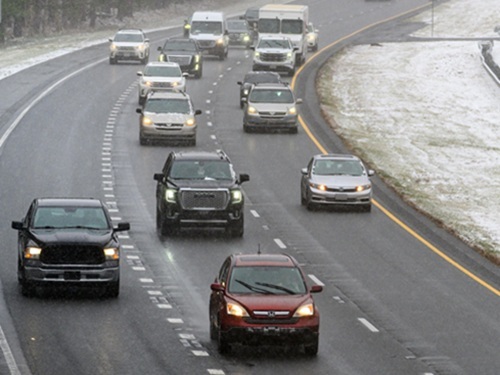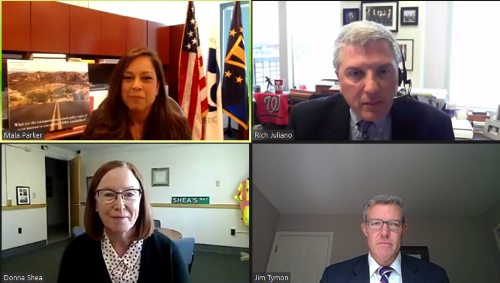The Federal Highway Administration plans to support seven transportation “innovations” via the sixth round of its Every Day Counts or EDC program. Created in 2010 in collaboration with state, local, and tribal transportation agencies, the EDC program promotes the “accelerated use” of tools, technologies, and methods nationwide to improve road and bridge projects: reducing their cost and shortening completion times as well.
The EDC program “is about finding new ways to leverage our collective resources to provide state, local, and tribal transportation leaders the opportunity to deploy ready-to-use innovations,” explained U.S. Transportation Secretary Elaine Chao in video remarks during a virtual meeting hosted by the FHWA to highlight the EDC awards.
“We need to make transportation infrastructure as safe, reliable, and strong as possible … because transportation is the backbone of our economy and is key to keeping our supply chains open, reliable, and secure during this [COVID-19] public health crisis,” she added.
“This round of innovations has incredible potential to help agencies with limited resources deliver projects more effectively, improve safety, and support the nation’s economic recovery,” noted Nicole Nason, FHWA’s administrator, during the event.

“Due to challenges posed by decreases in transportation, this program’s name could easily stand for ‘Every Dollar Counts,’ for now more than ever innovation is critical to advancing transportation’s benefits for the public and all of our stakeholders,” she said. “We have not stopped advancing transportation innovation even during these incredibly tough and unusual times.”
Jim Tymon – executive director of the American Association of State Highway and Transportation Officials – participated in a panel discussion during the virtual EDC event to highlight the benefits of innovations developed by the EDC program are providing to the transportation industry.

“State DOTs traditionally have been the laboratories of innovation,” he explained. “Right now, every state DOT has established a State Transportation Innovation Council or STIC; that shows how innovation is tightly woven into the fabric of the industry’s culture. It is one way states promote new market-ready and innovative solutions for the transportation industry.”
Richard Juliano, general counsel for the American Road & Transportation Builders Association, added that the EDC program helps “tell the story” regarding the importance of transportation to the nation and its citizens.

“Transportation innovations are very helpful in our advocacy efforts,” he said. “We need to continue growing our nation’s transportation investment and we work with AASHTO and others on that. We are all advocates, maybe of different types due to our respective roles, of transportation.”
Juliano also stressed that “innovations help capture the imagination of the general public – it helps us also reach out to the younger people, as technology is part of their lives and shows them that transportation is a high-tech industry.”
To that end, the seven innovations FHWA is sponsoring via the sixth round of EDC program funding are:
- Crowdsourcing to Advance Operations: Transportation agencies using crowdsourcing to increase their “situational awareness,” which enables them to improve the real-time management of traveler information, traffic incidents, work zones, traffic signals and more in a cost-efficient manner. With crowdsourced data, agencies can capture in real time travel information from a wider array of sources than currently possible. The benefits of crowdsourced data include improved travel reliability, fewer crashes and other safety improvements, and a reduction in costs associated with installing and maintaining additional data-gathering road sensors.
- e-Ticketing and Digital As-Builts: State DOTs and other agencies use these methods to more efficiently gather, share and manage the massive amounts of data generated by a typical highway construction project. Converting paper-based systems for project materials tickets into electronic ones – known as “e-Ticketing” – improves the tracking, exchange and archiving of construction materials information. e-Ticketing also improves safety by reducing inspector and work crew interaction with traffic and construction equipment. More than a dozen state DOTs, including Minnesota, Missouri, and Pennsylvania, currently use e-Ticketing for construction contracts. Digital “as-builts” are modern project information models that capture data about utilities and other valuable construction information to support future operations, maintenance and asset management, and create a digital twin of an agency’s transportation system. State DOTs in Michigan and Colorado use digital as-builts to improve worker safety by identifying the exact locations of potentially dangerous underground utilities.
- Virtual Public Involvement (VPI): Soliciting public input helps identify issues and concerns much earlier in the transportation decision-making process. VPI allows state DOTs to do so more effectively by using technology platforms to increase the number and variety of methods for engaging the public, obtaining feedback and considering comments. For reasons related to the current COVID-19 pandemic, several states are using VPI more extensively, with the Iowa Department of Transportation going so far as to develop a web-based tool to compile public comments throughout all phases of project delivery.
- Next-Generation Traffic Incident Management (NextGen TIM): While crashes and other traffic incidents increase risk to first responders and the traveling public, they also contribute to most traffic delays. NextGen TIM helps state DOTs and other responder agencies improve their use of public safety computer-aided dispatch systems, unmanned aircraft systems, crowdsourced data and virtual TIM responder training. Leveraging NextGen TIM helped law enforcement agencies such the sheriff’s offices in Maricopa County, Arizona, and Tippecanoe County, Indiana, as well as state DOTs in Oregon and Maryland, reduce incident road closures and overall incident clearance times by more than 30 percent.
- Strategic Workforce Development: Demand is high for highway workers who are adept at using technologies to transform design, construction and maintenance of transportation projects. FHWA supports the use of innovative new efforts to develop workforce strategies that help identify, train, and place individuals who make up a vital element in the nation’s essential workforce. From 2016 to 2018, FHWA partnered with the U.S. Labor Department’s Employment and Training Administration and others to conduct a 12-city pilot that explored how various industries can collaborate to improve recruitment, training and retention of highway workers. The effort led to the creation of “Identify, Train, Place” – a highway construction workforce development playbook that can help expand the highway contractor workforce. Similar efforts, like the Alabama Road Construction Training Course, the Denver WORKNOW Navigator Program and the Future Road Builders Gaming App, reflect the growing awareness of a need to expand a skilled highway workforce to meet the needs of the future.
- Targeted Overlay Pavement Solutions: Transportation agencies are finding that new material placed or “overlaid” over an existing pavement structure by using data to target areas where limited maintenance resources can be used for maximum gain. Coupled with innovative materials and performance-enhancing methods that reduce the impact of construction on traffic, targeted overlay pavement solutions help state DOTs maximize their highway investments. For example, the Utah Department of Transportation applies stone-matrix asphalt as an overlay because of its proven durability and performance.
- Ultra-High Performance Concrete (UHPC) for Bridge Preservation and Repair: Agencies have used UHPC for bridge construction for years, especially when connecting prefabricated bridge elements. Now, more state DOTs than ever are using UHPC on bridge preservation and repair projects because it offers superior strength and durability. It also provides innovative cost-effective solutions for improving and preserving bridge conditions. Between 2016 and 2019, state DOTs in Delaware and Florida repaired or strengthened more than 20 bridges using UHPC.
 Nation
Nation
Registration Open for AASHTO’s Winter Rail Meeting
December 19, 2025 Nation
Nation

